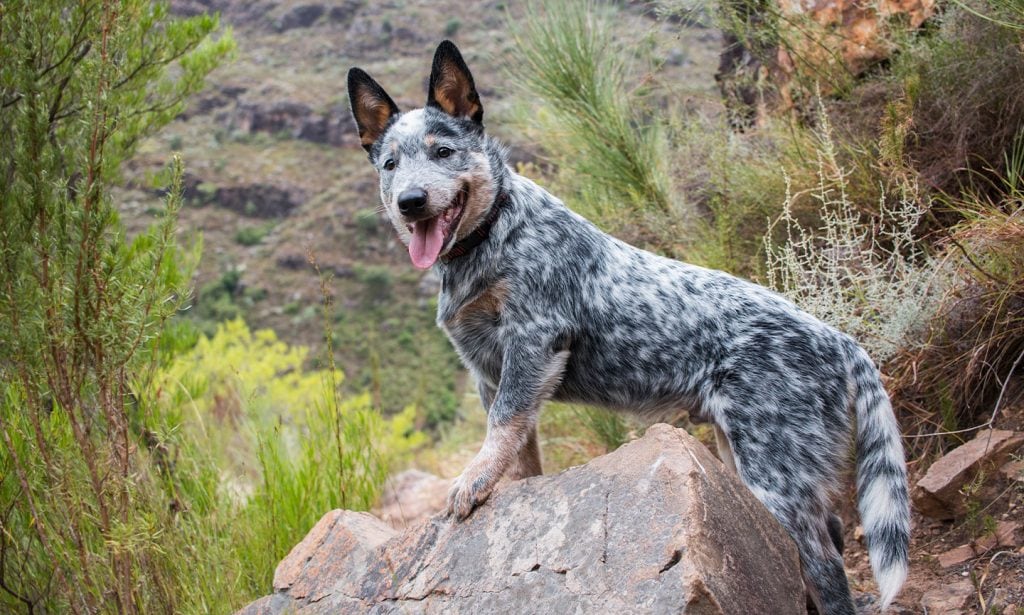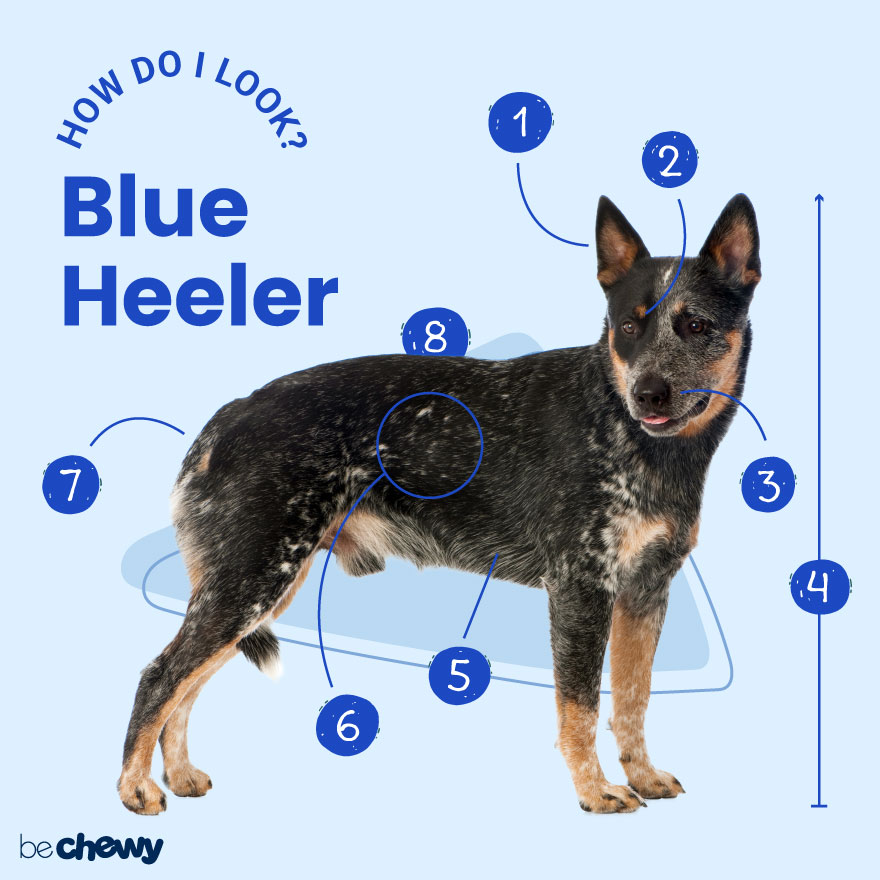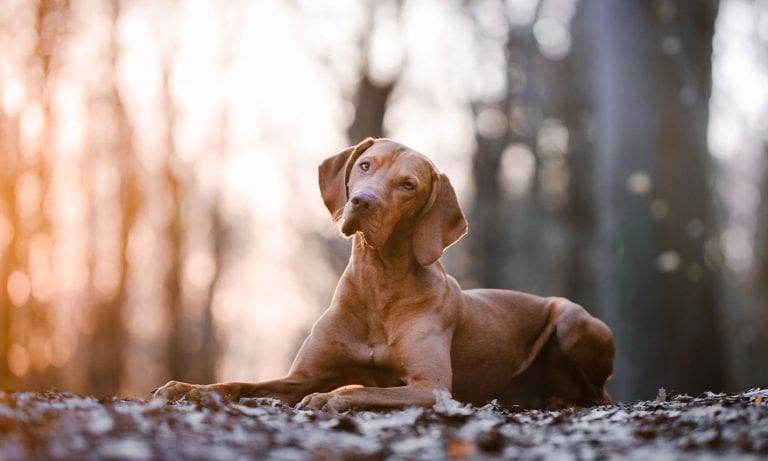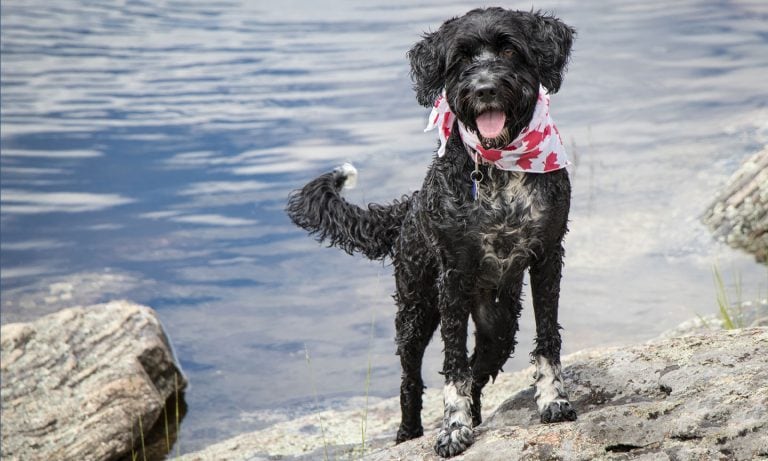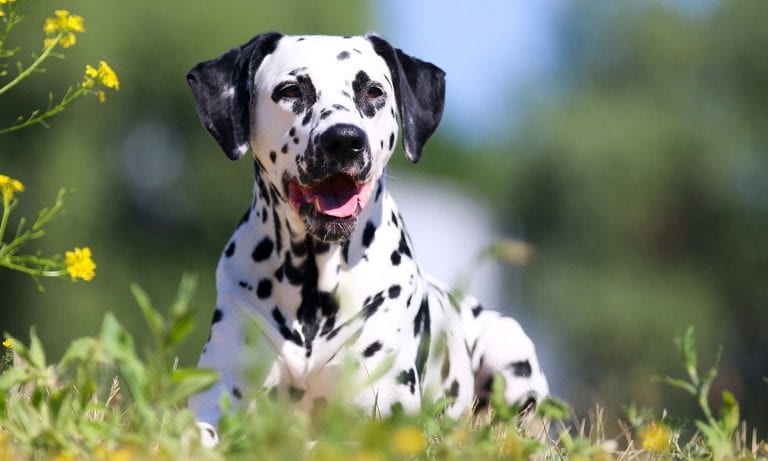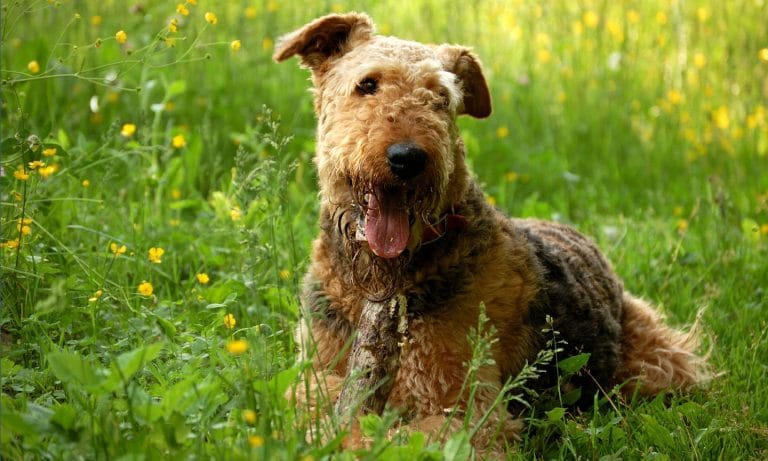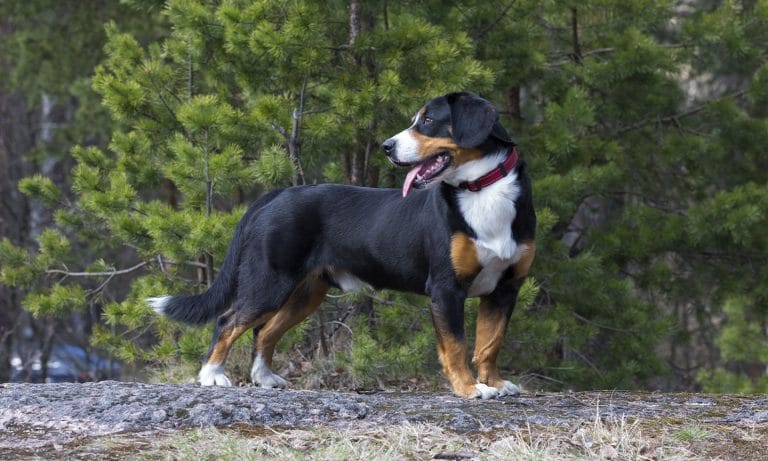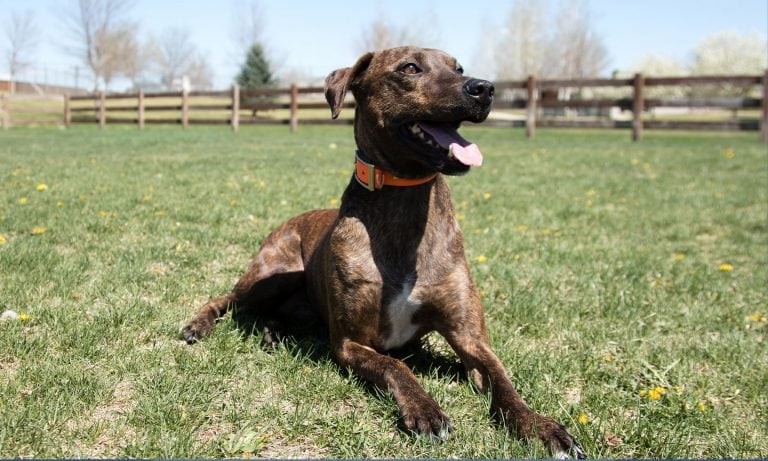As their name implies, Australian Cattle Dogs (aka Blue Heeler or Australian Heeler) are born and raised to herd cattle. Don’t have cattle for them to herd? Then you just found a new workout buddy. Like most herding breeds, these pups are high-energy, agile and ready to get to W-O-R-K. Combine those traits with their sharp wit and protective nature, and you’ve got a furry partner in crime who’s always ready for action.
Breed Snapshot
Temperament:
Whip SmartHard-WorkingAdventurousCoat Color:
Blue-GrayRedMottled
Best For
Australian Cattle Dogs are best for active, experienced pet parents. They need lots of exercise, so homes with large yards are a must. Blue Heelers also tend to do better in households with older children.
Australian Cattle Dog Temperament
Australian Cattle Dogs were bred to be working dogs and are classified as members of the herding group. (Those dog born to herd livestock.) Most of these dogs are at their happiest when working, or at least staying busy. As such, this breed thrives in active households and hates being bored.
Because they’re herders, raising an Australian Cattle Dog means training and socialization are important. This is an independent breed who doesn’t want to share. So, start introducing your pup to people, other dogs and situations while they’re young to help them be accepting of new experiences as they grow up. When it comes to obedience training, consistency is important. Regular training sessions will help this tenacious breed be a well-behaved family member.Australian Cattle Dogs may sound like a handful, but with confident pet parents to channel their energy the right way, these dogs are unstoppable.
How to Care for a Australian Cattle Dog
The Australian Cattle Dog breed has hard work and people-pleasing in their DNA, but that doesn’t make the breed low maintenance. Daily activity and training will take more time than grooming, but they’re happy to take up exercising with you as a substitute for farm life.
Australian Cattle Dog Health
While the Australian Cattle Dog breed is known to have a sturdy constitution and a robust life expectancy of 12 to 16 years, it’s important to know there are some common health issues to look out for in the breed.
- Progressive Retinal Atrophy: This eye condition is a common health issue for Blue Heelers. Initially, PRA presents as retinal deterioration, and over time, it can lead to a total loss of vision in your dog. Common symptoms include difficulty seeing at night and widened pupils. Sometimes the development of cataracts may occur in the degeneration’s late stages. Unfortunately, there are no effective treatments for PRA. If this happens, pups with vision loss can still live happy lives with the love of parents who help them navigate the world around them.
- Hip Dysplasia: Australian Cattle Dogs are also susceptible to hip dysplasia. This inherited condition arises when the hip joint’s ball and socket fail to fit snugly together. Common symptoms include hobbling, decreased physical activity and stiffness or limping. Pet parents may be happy to know that there are various treatments for hip dysplasia, ranging from lifestyle changes (e.g. dieting and weight loss) to surgery.
- Deafness: Also inherited, deafness is another health issue for Australian Cattle Dogs. This impairment can vary widely from dog to dog. Common indications of deafness include excessive barking and a lack of reaction to normal noises. Currently, there is no treatment for deafness in dogs. Again, pet parents are encouraged to help their pups navigate the world as best they can. In this case, keeping them on a leash is crucial when they’re outside as they won’t be able to hear what’s going on around them, and that can become a significant safety concern.
Australian Cattle Dog History
The origin of the Australian Cattle Dog began in the 19th century when the British brought the Smithfield sheepdog to Australia. This dog, however, did not fare too well on the rough terrain and sweltering heat, so Australian settlers quickly sought to create a herding breed to thrive in that environment.
Initially, Smithfields were bred with dingoes as well as the Scottish Highland Collie. The Blue Heeler we know today is a cross between a mixed dingo-Collie breed and Dalmatian.
While their history began in Australia, the breed first came to America in 1950. Australian Cattle Dogs were admitted to American Kennel Club in 1980, and they became a charter member of AKC Herding Group at its inception.
When looking for information on the Australian Cattle Dog, you’ll find this breed has plenty of aliases, including the Queensland Heeler (a nod to its origins) and Blue Heeler. The term heeler came to be associated with them as a clever reference to their herding style of nipping at the heels of cattle to move them along, while the term blue refers to their popular blue-gray speckled coats.
If you’re looking for an Australian Cattle Dog puppy, you can find reputable breeders at the American Kennel Club’s website. You can expect puppies to cost between $600 and $1,000, but they can go upwards of $2,000 for championship lines. For that price, you’re likely getting a pup who’s been screened for health and temperament issues and may come with pedigree papers. If you’d like to adopt a pup, reach out to Blue Heeler rescues or keep an eye out for the breed at your local animal shelter.
FAQs
How long do Australian Cattle Dogs live?
Australian Cattle Dogs live anywhere from 12 to 16 years. They are a hearty dog breed, and they have relatively few health issues in comparison to other dogs. This breed requires a great deal of exercise so that helps keep plenty of health issues at bay.
Do Australian Cattle Dogs shed?
Yes, Australian Cattle Dogs do shed. These double-coated pups have a smooth top coat and a short, dense undercoat. And while they’re not big shedders, they tend to blow their undercoats twice a year. These dogs require a good brushing at least once a week, but you may want to brush them more frequently when they’re blowing their coats.
Are Australian Cattle Dogs aggressive?
It would be easy to dismiss the ACD as aggressive; these dogs are loyal to their family, protective of their home and always ready to spring into action when needed. But with proper socialization and lots of training, this breed can be well-behaved members of the family.
How big do Cattle Dogs get?
Australian Cattle Dog males get to be between 18 to 20 inches tall, and females stand 17 to 19 inches tall when fully grown. They are a medium-sized breed and tend to weigh between 35 pounds and 50 pounds.
What are the most common cattle dog mixes?
The most common cattle dog mixes are:
- Australian Cattle Dog-American Pitbull Terrier (Pit Heeler)
- Australian Cattle Dog-Australian Shepherd mix (Texas Heeler)
- Australian Cattle Dog-Basset Hound mix (Basset Heeler)
- Australian Cattle Dog-Beagle mix (Beagle Cattle Dog)
- Australian Cattle Dog-Border Collie mix (Border Heeler)
- Australian Cattle Dog-Boxer mix (Box Heeler)
- Australian Cattle Dog-Boston Terrier mix (Boston Cattle Dog)
- Australian Cattle Dog-Cocker Spaniel mix (Blue Spaniel)
- Australian Cattle Dog-Collie mix (Cattle Collie Dog)
- Australian Cattle Dog-German Shepherd mix (Cattle Shepherd)
- Australian Cattle Dog-Husky mix (Ausky)
- Australian Cattle Dog-Labrador Retriever mix (Labraheeler)
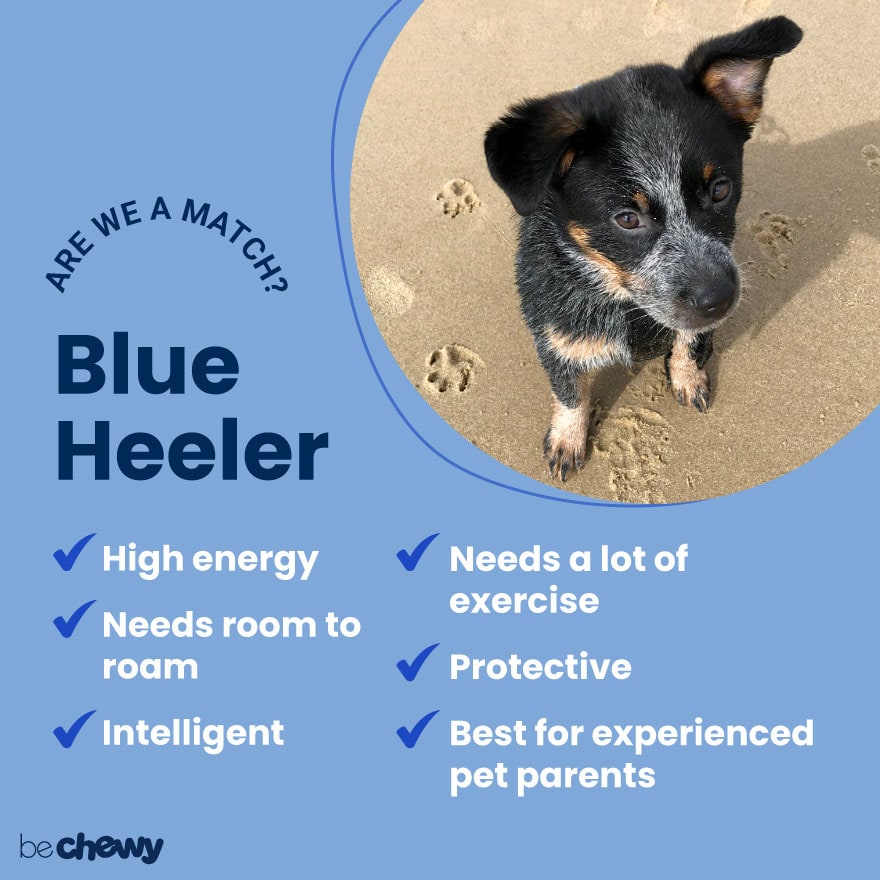
Top Takeaways
Australian Cattle Dogs are loyal and protective pets who make great companions. Pet parents should know these dogs need lots of exercise to stay happy. If you keep them close and take them with you on your adventures, it’s sure to be a rewarding experience for both of you.
Rendy Schuchat, M.A., Owner/Founder and Certified Head Dog Trainer at Anything Is Pawzible, and Matt Beisner CPDT-KA, star of DOG: IMPOSSIBLE on Nat Geo Wild and Disney+.

Search for Adoptable Australian Cattle Dogs Near You
Top Australian Cattle Dog Names
These are the top Australian Cattle Dog names as chosen by Chewy's pet parents!
Female Names
- Luna
- Pepper
- Daisy
- Bella
- Ruby
- Sadie
- Willow
- Nova
- Lucy
- Stella
Male Names
- Bandit
- Hank
- Cooper
- Blue
- Max
- Milo
- Ranger
- Tucker
- Loki
- Koda
Share:
